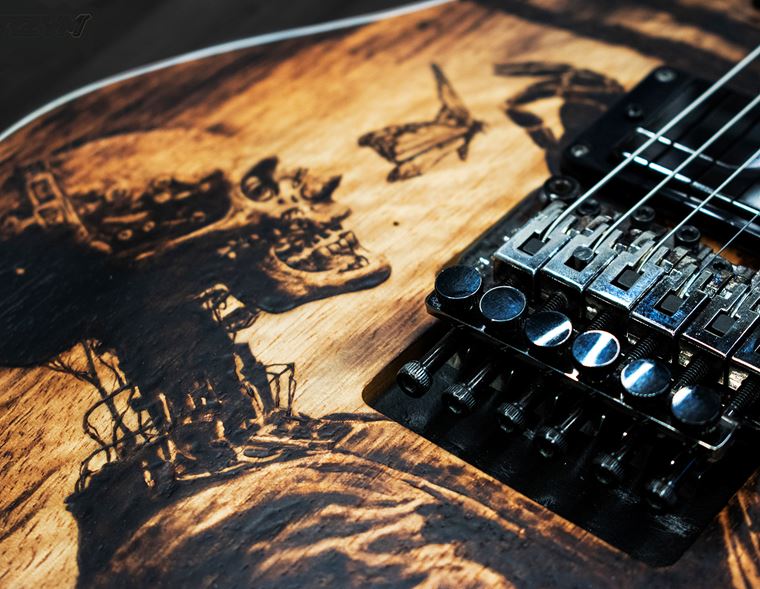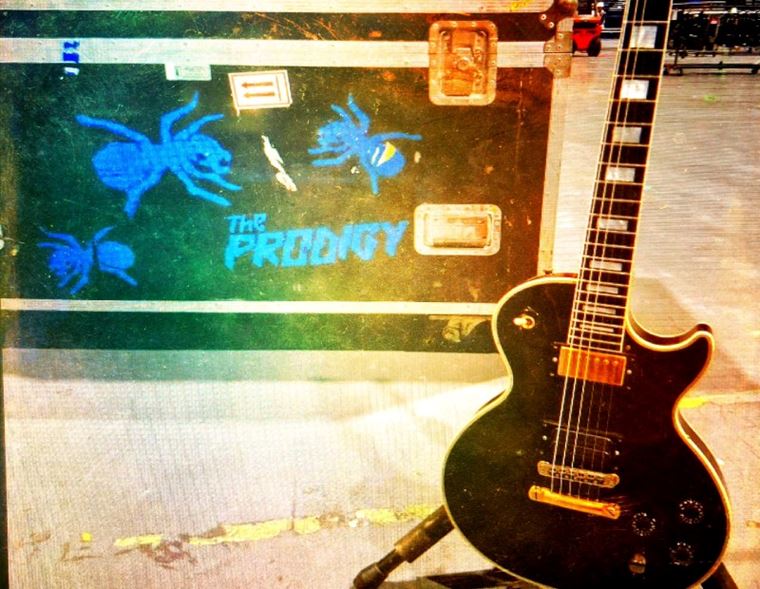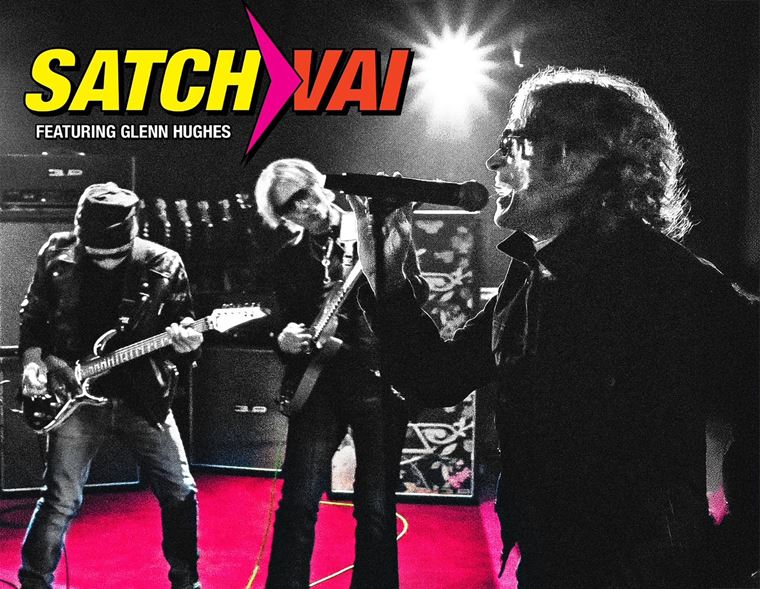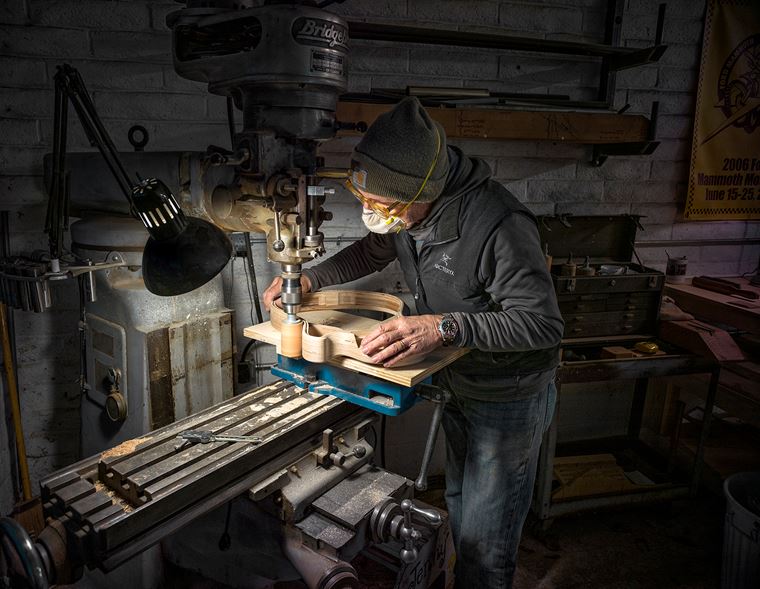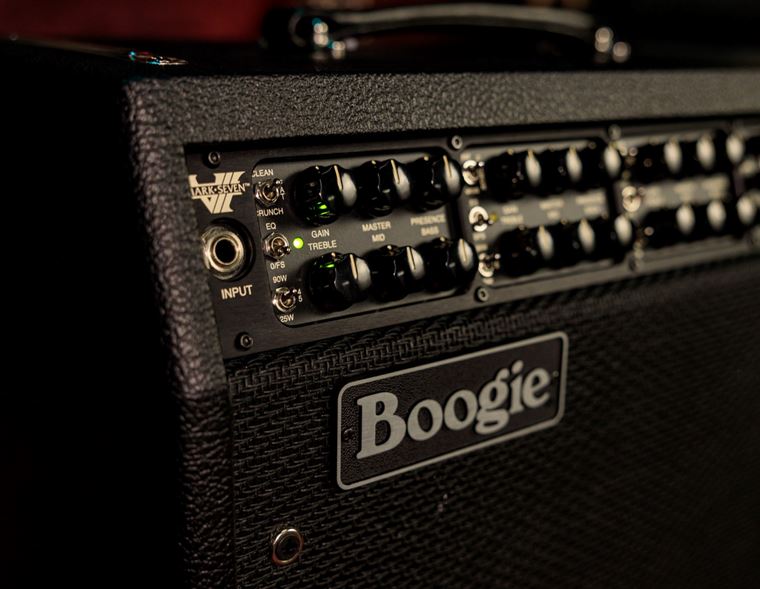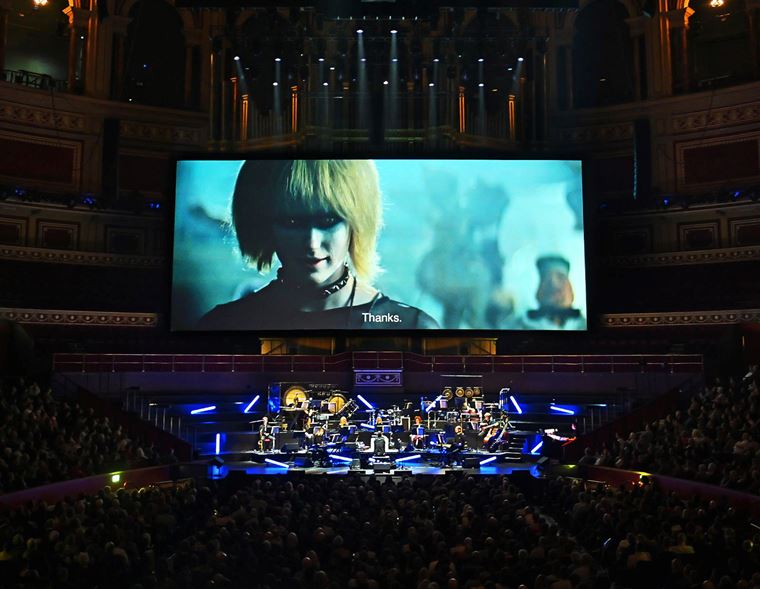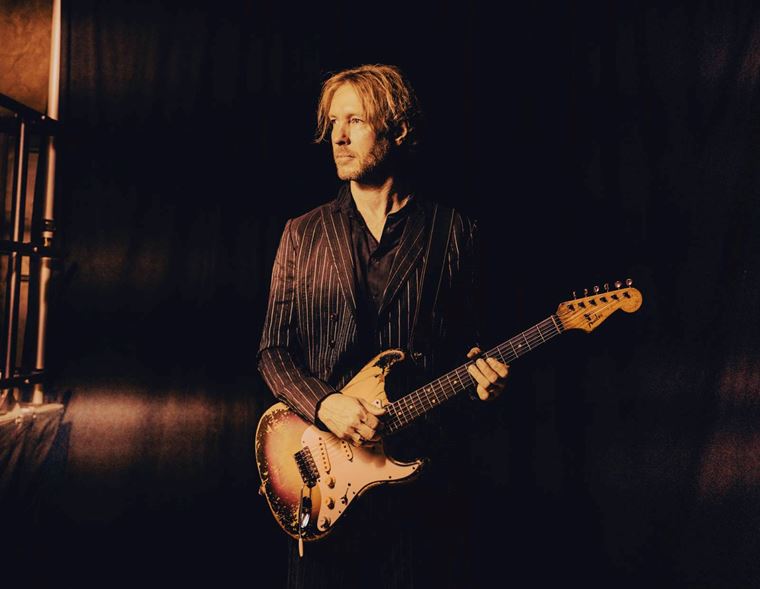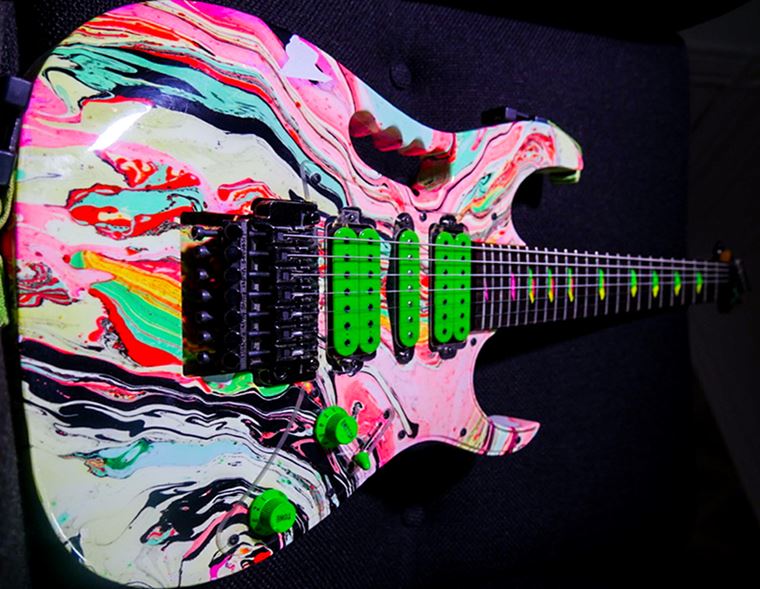The guitarguitar Interview: Jonathan Hulten
‘Chants from Another Place’.
There has perhaps never been a more suitable album title than this.
Jonathan Hultén’s full-length solo debut is set in a rich, beautiful and evocative world, entirely existing within its own landscapes, lighting and sound. Listening to this record is akin to embarking on a dark and magical journey, with light flitting through the trees and clouds covering the moon and stars as you walk through a land that’s both familiar and unknowably mystical. Calling it ‘acoustic’ is massively reductive: this music is thick with atmosphere, filled with perfect vocal harmonies and dark grandeur.

Jonathan, who also created the fairytale-like artwork on the cover, is guitarist with Swedish metallers Tribulation. A baroque, gothic darkness permeates his solo work too, though it’s far removed from the death growls and riffs of his day job. His artistic sensibility, influenced by Romantic illustrators like Harry Clarke, bears out in his dramatic image and stage presentation, too. There are many ways to be an expressive person, and Hultén has embraced multiple paths in order to fully represent himself and his work. Indeed, his promo videos you see here are all animated by Hultén himself, too.
Chants From Another Place was released in March, timed perfectly to coincide with a tour supporting Chelsea Wolfe across Europe. Unfortunately, as we are all too well aware, the world changed right about then, making touring an impossibility for everyone. Unable to meet Jonathan in person, we instead communicated via email. Never one to relax, it seems, we caught Hultén in the final phases of recording for a new Tribulation album! Even international lockdown can’t hinder his creative muse, it seems! The resulting article here today hopefully displays his thoughtful, sharing nature, and his high dedication to the multiple crafts he excels in. We cover a lot of ground in this relatively brief piece, including inspiration, perfectionism and the benefits of nature!
Jonathan Hulten Interview
guitarguitar: Now, even before I put the record on, I could tell from the artwork that I was going to like what was inside! You created the artwork, didn’t you? Is this an important part of the process for you?
Jonathan Hulten: I’m happy to hear that! Absolutely, it’s an important part of the process. The artwork forms in symbiosis with the music. As a song comes together, so does also a mental image take shape. As it were, these images bind the songs together with their motifs and aesthetics, giving the whole a sense of cohesiveness. They can also convey feelings the music falls short of doing, complementing the experience by emphasizing certain elements. For example, depicting a magical tree with a figure sitting in front of it, surrounded by tall pine trees gives a hint of what the song ”Next Big Day” is about. In general, nature came to have a central role when it came to visualizing the songs, it holds the perfect metaphors.
GG: Visuals play an important part in your own image and stage attire etc. Who were your main inspirations here? And do you find it strange that so many artists don’t go further in this direction?
JH: By having experimented a lot with makeup in Tribulation I developed an interest to explore this realm even further and that journey has continued into Chants. I think there is a lot to be gained by daring to embody your music in the most outrageous ways, whether it be through flamboyant movements, strange dresses or weird makeup. The more an artist can bring out from their inner world and project it outwards through a performance, the more interesting it will be for everyone involved. The stage is like a portal to another world and the performance is the key. As for why not many choose the route of dressing up it could be because it might feel forced if not balanced correctly and it could easily tip over and feel cheesy. However, it’s a matter of feeling comfortable with staying true to one’s vision and not being discouraged by potential ridicule. You have to take the risk of coming of as cheesy. I mean, someone will always dislike and ridicule what you do regardless, so why not go all the way as you had envisioned it? As for what inspires me, the illustrations by Yoshitaka Amano have played a major role in my taste in clothes and makeup. Every time I’ve created a new look I’ve had at least one of his character designs as a reference.
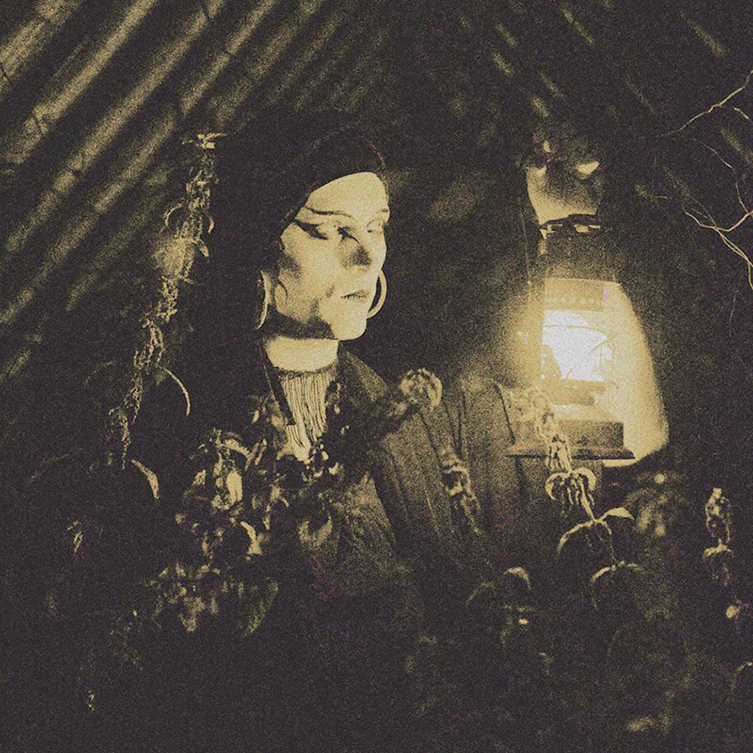
GG: Chants from Another Place is quite a departure from your band Tribulation. Have you been wanting to put out an album like this for a long time?
JH: Yes, this has been something I’ve had growing in my mind for many years. The departure-aspect is pretty important too. By seriously taking part of a band, an equally or even greater urge to do something completely different gradually emerged. As a 25-year old started to feel that if I didn’t start pursuing my old teenage dream of releasing something on my own, I would start to wither from within from not living up to my own expectations of myself. ”Who do I actually want to be? Want do I really want to do?” By knowing the answers to these questions but still not doing anything to achieve them must be one of the safest ways to steadily demoralize and make you despise yourself. This has made me think that it is incredibly important to take your dreams seriously, despite of how silly they might seem. And even if nothing goes as planned or even goes well, it’s the act of working for something that you have decided for yourself that is liberating and meaningful. When no one knows, cares or is asking for it and it is sprung solely from your own volition – to decide to go through with something under those conditions has a liberating effect. It’s for the sake of doing itself, for the sake of creating and for the sake of art. It’s indeed the case of when the journey itself is the goal, rather than the goal being success or recognition. The work you put in into something is it’s own reward – because what you actually work on is yourself.
GG: What type of musical influences came to bear with this music?
JH: I’ve always been very interested in vocal harmonies, I find it beautiful and a lot of fun to sing with others. That drew me to choir music and folk a capella. Also, Nick Drake’s ”Pink Moon” had a tremendous impact on me when I first heard it. It introduced the minimalistic acoustic style of songwriting that has come to be an important ingredient in Chants. The same with Anna Ternheim’s albums, they influenced my preferences early on. Especially ”Somebody Outside” and ”Separation Road” as wholes had the dynamic variance and soulful depth I would later aim for in my own albums. Enya has also influenced my use of synthesizers and harmonies, especially on tracks like ”Wasteland”. Nirvana is a great influence as well, I love their still unconventional mix of major and minor chords and the creative chord progressions. And Led Zeppelin of course, the guitar playing of ”Black Mountain Side” has meant a lot for my own playing, like in “A Dance in the Road” for example. And PJ Harvey, there is a sense of urgency and sublime rawness in her songwriting and her voice that I adore and have learned a lot from. And there are all the composers of film and game soundtracks like Philip Glass and Nobuo Uematsu. And pianists like Ludovico Einaudi and Nils Frahm. The list is endless.
GG: There seems to be a choral music influence, or medieval devotional music influence, on this album. Would that be correct? If so, can you recommend any particular favourites for our readers to investigate?
JH: Oh yes, one of my favorites is ”Lamentations”. It’s a fantastic album consisting mainly of compositions from the 1500’s recorded by an a capella group called Nordic Voices. Another favorite from the more folky side of things is Kongero’s ”Den Bakvända Världen”. In songs like ”Bergtrollåt’n”, ”Spinn spinn” and ”Bältet” there is a nerve and a creativity that really has inspired me and taught me new ways of how to approach harmonies in general. And the manner in how the triad of voices is used in Frifot’s song ”Werlden Äe Underlig” would become the cornerstone on which I would later base all harmonies in Chants. That’s the one thing I have stuck to since then – to always have maximum three harmonies. I would love to eventually have two singers join for the live shows, then we could perform all songs as they are.
GG: What was your main acoustic guitar for the recordings? And is this the same guitar you take on tour?
JH: I use an Ibanez AEG both for recordings and for touring. I’m considering trying out something else for the next album, but I really like how this guitar sounds.
GG: What is your preference for string gauge and plectrums?
JH: Jim Dunlop Jazz 3 XL is my plectrum of choice. I like the small ones as well, but using something larger gives some leeway during live performances when I tend to move around a lot or have to concentrate on singing the right notes.
GG: How do you approach an acoustic performance compared with a full band ‘electric’ show?
JH: Both Chants and Tribulation have come to involve quite a lot of equipment such as wireless cables and in ear-systems, so in a sense they aren’t that different from each other on the technical side of things. But it’s two different types of performances; one is calm and does not require much grandiose movements, the other one is wild and more unpredictable. In Tribulation I need to be able to move as freely as possible, which sometimes clashes with the limitations of the gear and the guitar playing. Having to perform the songs is the one thing that holds me back. Sometimes I think I would be happier if I could just dance to my heart’s content instead. Chants however, is another story. Here is precision and subtlety of most importance and tension and atmosphere is given more space. Instead of pirouettes and back-bends it’s the small things that are telling the story.
GG: Landscapes seem to play a large part in your creations, both exterior and interior. Would that be right? Does your local area in Sweden have an influence?
JH: Correct, I see landscapes in the songs. They are not necessarily directly connected to any real geographical locations in particular, but are more like my accumulated memories of experiences of nature. Certain imagery (like the moon for example) gets charged with certain emotions, so while writing or listening to music an inner image is being created by deriving from those emotionally charged memories (for example, a moonlit landscape taking form while listening to a sad song). I guess that could be a general description of how we function with all our experiences of the world by connecting things and phenomena to feelings, but nature landscapes as metaphors are special to me. They seem of a more universal character and has an almost mythical quality to them, as opposed to something more associated with modern day city life. They are more mysterious, yet I have a feeling that we all can sort of understand them intuitively.
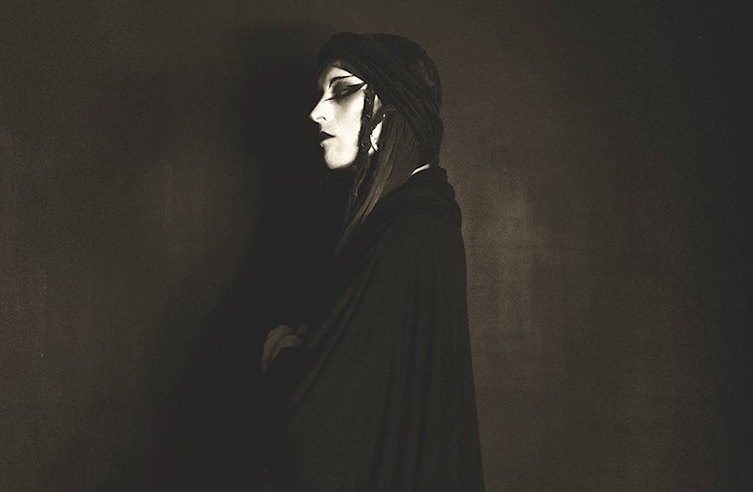
GG: You’ve said there was a “mystical state of mind in which the songs were created”. Do you use certain practices or method for getting into a mystical state of mind?
JH: Spending a lot of time alone in the forest is my remedy and method just about anything in life. It’s where I best can hear myself think and also best can stop thinking. That is when space is being made for inspiration to well up from below. Then of course, there are more intentional methods like breathing techniques and meditation and more intense experiences like psychedelics or extreme physical feats which I all respect and revere. But I would still like to give a lot of credit to the humble walk in the woods, idly sitting on a stone watching the trees or silently observing a sunset. Life seems more and more mysterious the more you take time to observe it, ponder over it and appreciate its beauty.
GG: Let’s talk more about influence and inspiration: do you have any esoteric or spiritual interests? Did they make it into the music?
JH: Yes, these fields of interest along with others such as philosophy and mythology are continually changing the way I look upon the world. Inevitably it finds its way into the music, albeit not always in an explicit way. But I think one’s perception and understanding of what it means to be alive and what life is always reflects in the artistic expression – in everything one does and creates, really.
GG: When did you first come across artists like Harry Clarke and Aubrey Beardsley?
JH: That must have been in the early 2010’s, before and during the ”Formulas...”-era of Tribulation. During our exploration of art history in search for inspiration, the Golden Era of Illustration, Art Nouveau and the Arts & Crafts-movement drew us in with their swirlingly decorative and fairytale-like characteristics. Among other artists from the same period I also really like Arthur Rackham, John Bauer and Kay Nielsen. As for Clarke and Beardsley, although they both have their own unique style their line-work also have a lot in common. I am in love with artful frailty and grace the characters of both artists display. Beardsley is great at leaving the right amount of one colored space in the picture and bring attention to a certain area, while Clarke has an amazing eye for details and often uses it to its full potential.
GG: The vocal harmonies on the record are outstanding! Do you have any formal training that way? And even so, do the vocals take a long time to get right?
JH: Thank you! I sang in a choir in school but never had any formal singing-lessons. But it was the theory lessons that really peaked my interest when we got to sing harmonies in small groups. I suppose it grew to become a special interest over time. My songs are pretty much built around how the harmonies enfold the lead vocal and the guitar. It takes a while to get it right when recording, but I just enjoy working really hard with it and then after hundreds of takes finally be satisfied enough with the results. The quest for perfection is unending and unattainable, but maybe that’s why I love struggling with it so much.
GG: When you perform live, how do you tackle the harmonies? Do you use any pieces of technology?
JH: Ah yes, I used an iPod with split stereo in the past but I was just about to try out a new piece of equipment called Cymatic Audio. It’s fairly easy to use but it’s a hassle to prepare the files. It has been a technical venture from which I’ve learned quite a lot (I’m not very good at technical stuff). It also gave me the opportunity to work with SMPTE-code, so via a DMX-recorder I had preprogrammed lights that would have accompanied me on the future tours.
GG: You were due to tour with Chelsea Wolfe before the Coronavirus washed across the planet. Presumably, you now have some free time. Apart from talking to me, what kind of things will you be doing whilst in lockdown?
JH: We’ve just spent the last couple of months recording the fifth studio album with Tribulation and as I write this we have just wrapped it up. Tomorrow will be the day of cleaning and driving equipment back to the rehearsal space. The process was quite unconventional this time as I worked a lot from home in order to spend as little time in the studio as possible due to the circumstances, but despite everything we managed to tie it all together. There is also another animated video that I’ve been sporadically working on since late 2019, so I might just make sure to finish that one in the coming weeks. But yes, it has mostly been hard work from morning until evening.
GG: Finally, do you think it’s important for artists to go ‘deeper’ when expressing who they are?
JH: That’s an interesting question. What first comes to mind is that it depends on the artist, on what you want to express and what is needed to make that expression as good as it could possibly be. Sometimes the expression would not benefit from being more personal (if that is what could be meant with deeper), sometimes mystique and anonymity is needed to enhance the atmosphere and sometimes singing about impersonal and universal things would be a suitable approach to go deeper in another sense. Everything has potential of being interesting on its own terms. What matters is how deep the listeners go into themselves when listening to the music, regardless of how deep or shallow the artist’s intention might have been when creating it. In the end, it’s the subjective experience that matters to us. We tend fill things with our own meaning where we choose to focus our energy. We fill what we have in front of us with our own lives, both as audience and artist.
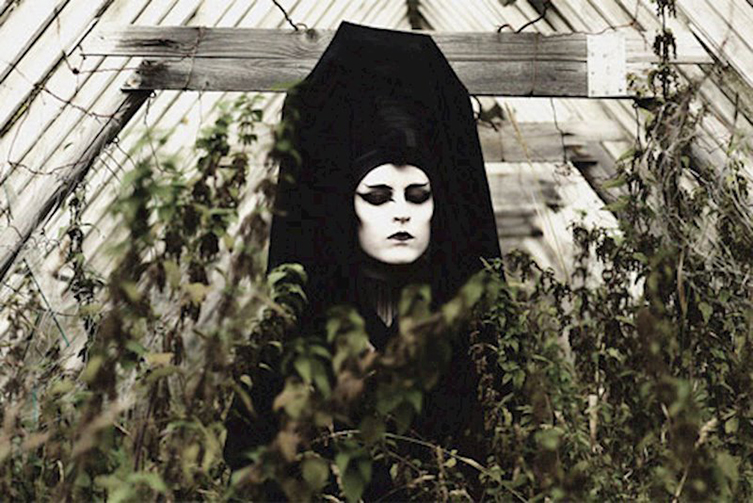
We look forward to hearing more from Jonathan, both musically and in terms of his graphic art! Once the world returns to some semblance of reality, we expect he’ll be out touring his enchanted music, but until then, keep up with him via the official Jonathan Hultén website.
We’d like to thank Jonathan for his extra efforts on making this interview. We’d also like to thank Simon Glacken for putting us in touch. Chants from Another Place is available now, wherever you get your music.
Thanks for reading.



